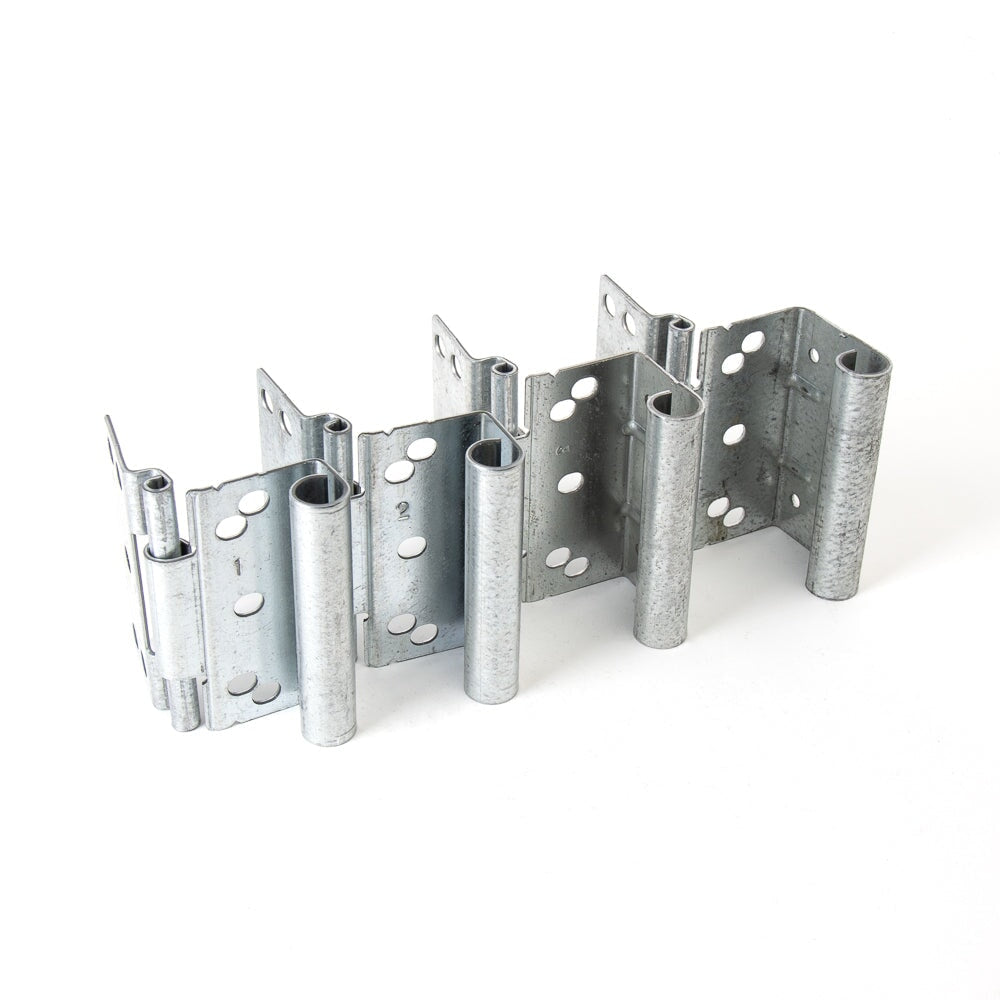Garage Door Hinges - Facts and Functions

Garage Door Hinge Facts
Garage doors are a vital part of your home. They provide protection from the elements, security from intruders, and convenience in certain situations. They also add to your home's curb appeal, but if they're not working properly, then all those benefits go away. If you have a broken garage door hinge, it may seem like a simple fix, but there are many parts inside these doors that come into play when something breaks down. Hinges are one of those parts that can cause problems if they're damaged or bent out of shape because they provide stability to the rest of the garage door.
Replace your Garage Door Hinge, not your door
Sometimes, people will get frustrated and just replace the entire door rather than fixing a garage door hinge or a garage door roller. While this is more expensive and requires more work, some people think it is less hassle than trying to fix it yourself. Over time, the hinges on a garage door may develop rust. This rust can occur both on the outside and inside of the hinge, and it can cause problems with the movement of the hinge. If the rust builds up inside the hinge, it can cause the hinge to freeze and stop working properly. To prevent this from happening, it is important to apply a garage door lubricant to the hinge regularly. This will help to protect the hinge from rust and ensure that it continues to function smoothly. If the hinges on a garage door are already rusty, it can make it more difficult to open the door and put additional strain on the garage door opener. To fix this problem, it may be necessary to replace the rusty hinges.
Garage Door Hinge Types
Hinges are usually located on both sides and in the center of a door and must be centered over each other for the door to open smoothly. Hinges are mechanical devices that allow objects to pivot and move. They are used in many everyday objects, such as doors and cabinets, to allow them to open and close.
There are different types of hinges used on garage doors. Garage door hinges are specifically designed to support the weight of a garage door and allow it to roll up and down the tracks. There are many types of hinged garage doors, each with its own unique set of hinges to support its movement. These hinges play a crucial role in the function of a garage door and are an important consideration when selecting a new garage door or performing maintenance on an existing one.
One manufacturer makes their own specialty hinge - Wayne Dalton garage door hinges
Garage Door Hinge Function
Garage door hinges are used to connect different parts of a garage door together, as well as to support the rollers that allow the door to move. These hinges are usually identified by a number, which indicates the specific area of the door that they are designed to support. For residential garage doors, these numbers range from one to five, while for commercial garage doors, the numbers range from six to ten. It is generally a good idea to replace both the hinges and the rollers at the same time, as the hinges and rollers work together to support the movement of the garage door. The hinges in the center of the door are typically numbered one, while the hinges on the edges that hold the rollers are numbered based on their position on the door.
The rollers inside your garage door should have rounded edges that fit perfectly with the radius of these hinges. If they're damaged or old and rusty, you'll need to replace them.
Things to consider when selecting new hinges.
There are two main issues to consider when replacing the hinges on a garage door. The first is the width of the hinges. If the new hinges are wider than the old ones, they may cause the rollers to bind in the tracks. To fix this problem, you can mount the new hinge further inside the door, making sure that it is flush with the end of the section.
The second issue to consider is the type of end stile used in the door. Some doors have steel end stiles, while others have wood end stiles. When installing new hinges, you will need to use the appropriate type of fastener for the material of the end stile. For steel end stiles, you will need self-drilling tek screw, while for wood end stiles, you will need lag screws. You may also need to add extra fasteners to secure the outer edges of the hinges.
Conclusion
If you’re looking for a new garage door hinge, check out our great selection of garage door hinges!

